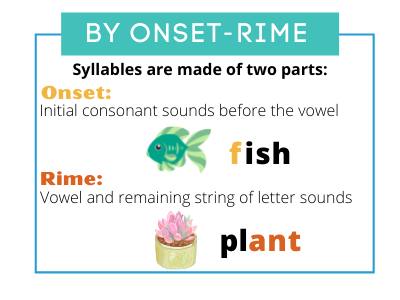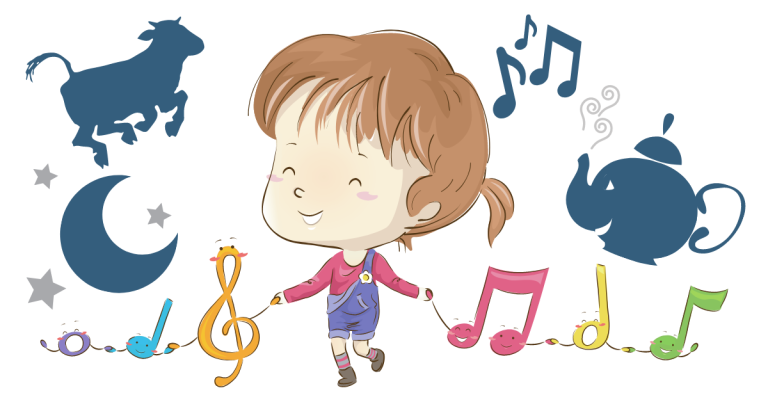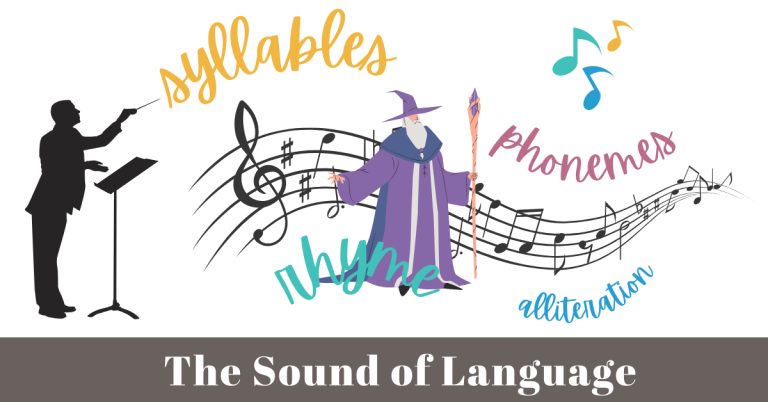Onset and Rime: What do They Have to do With Reading and Writing?
Not sure what the terms onset and rime mean or what they have to do with helping children learn to read and write? This blog will dive into these topics and supply you with fun oral onset and rime activities you can do with young children and struggling readers.
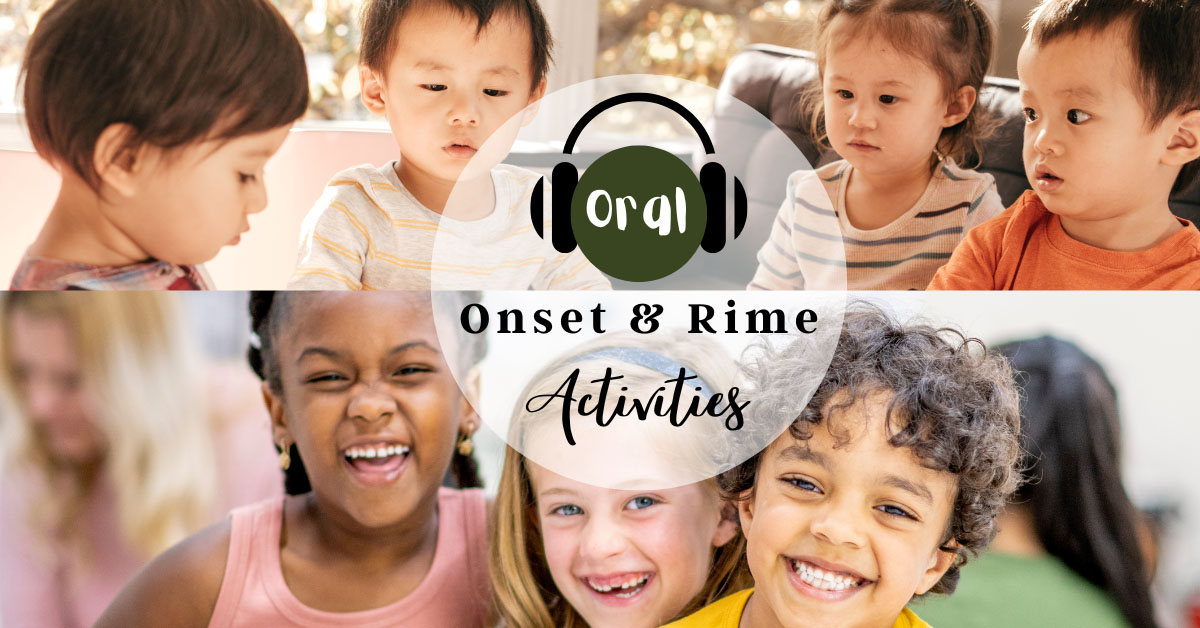
When it comes to reading and writing, the ability to break words into chunks of sound units plays an important role. Engaging your child in activities that break words down at the onset-rime level is a great way to draw attention to important sound patterns in a spoken language. Breaking words apart by their onset and rime can be an important bridge for helping children to later learn how to break down words at the smallest level of sound units, called phonemes, a crucial skill needed for learning to read and spell.
Recognizing speech sound patterns improves children’s ability to connect these sounds to written text to build fluency, accuracy, and speed with decoding. Decoding simply refers to the ability to apply letter-sound knowledge to correctly pronounce written-out text. When children can sound out many words effortlessly, they can turn more of their attention to comprehension tasks. And here is when reading magic happens, because children can start making connections and meaningfully learn from what they read.
Breaking Words into Smaller Chunks of Sound
There are different ways we learn to break words down into chunks of sounds. Children should learn these starting from the simplest way, which involves larger chunks of sound units, such as whole word recognition, compound words, and syllables, and then work towards learning the most complex way of breaking words down, breaking words down by their phonemes.
Breaking words into sound chunks and focusing on oral language activities in the early years can help develop your child’s ability to later make connections to the letters that represent these sounds. Learning to break words down into sound chunks is a useful strategy that later works to build automaticity with reading and being able to make educated guesses with attempting to spell new words.
Children learn the terms compound words and syllables but we don’t teach children the terms onset-rime and phonemes. These terms are not necessary for children to know, but the ability to break words apart at the onset-rime and phoneme levels are foundational for being able to read and write. So what exactly is the onset of a word? And what is the rime in a word? You’ll find everything you need to know as you keep reading. You will also find some simple oral onset-rime games you can play with your child or student to help them learn this particular phonological awareness skill.
What Do Onset and Rime Mean?
Onset and rime make up the two parts of syllables in a monosyllabic word (single-syllable word) that begin with a consonant or cluster of consonants. Learning to break words down at the syllable and onset-rime level influences later fluency with reading.

Onset refers to the initial consonant (letters of the alphabet with the exceptions of the vowels), consonant digraph (two letters creating one phonemic sound) such as sh, ph, ch, th, or consonant blend sounds which have two phoneme sounds that get blended when pronounced (such as bl, tr, sw, and str).
Examples: the sound /sh/ is the onset in the word shop; the sound /m/ is the onset in the word mop; the sound /fl/ is the onset in the word flop. In each of these examples, the sound /op/ is the rime.
Note: some words do not have an onset. Here are some examples: arm, ear, eight, itch, ouch, out, and us.
Rime refers to the sounds following the onset which include the vowel and any final consonants.
Examples: the sound /ate/ in the word plate is the rime; the sound /ain/ in the word rain is the rime; and the sound /ent/ in the word tent is the rime.
How Do Onset and Rime Affect Children’s Literacy
Onset and rime are a component of phonological awareness. Phonological awareness is an important pre-reading and writing skill, it is the ability to recognize and manipulate various sound patterns of a spoken language, and includes fundamental phonemic awareness skills, such as phoneme isolating, blending, and segmenting and other higher-level manipulations, like deletion and substitution.
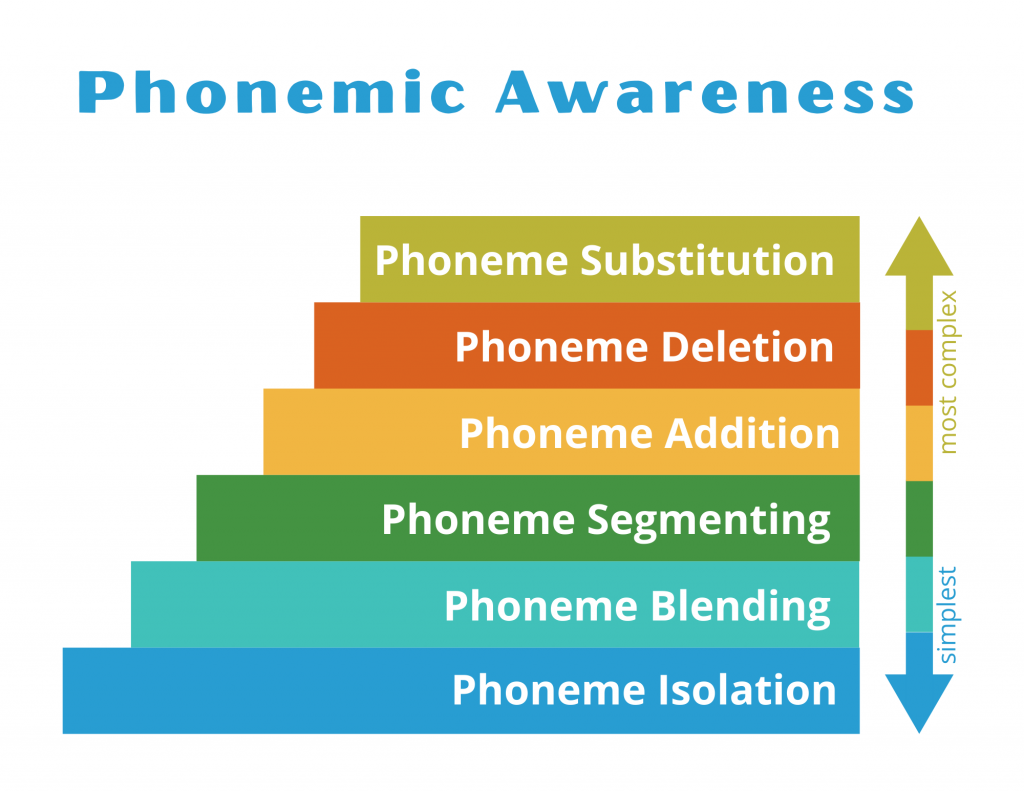
Sometimes phonological awareness is mistakenly interchanged with phonemic awareness or phonics. The reason for this is that all three are correlated. However, phonemic awareness is a subset of phonological awareness referring to the ability to isolate and manipulate the smallest unit of sound within a word, called a phoneme. In the English language, there are 44 phonemes represented by 26 letters. Naturally, it is much easier to learn sound pattern chunks than it is to memorize all 44 phonemes, which is why larger sound patterns are where you want to start with your child.
Phonological and phonemic awareness are sound-based and do not rely on print, whereas phonics does rely on print. Phonics refers to the relationship between sounds of a spoken language and the letters and spellings that represent those sounds (graphemes).
Children who have strong phonological and phonemic awareness are at an advantage, as research has shown that phonological awareness is closely linked to better translating this knowledge when they start learning letter-sound relationships using print and learning to read, resulting in higher reading development success.

Onset and rime activities act as a bridge, helping children start listening for the individual sounds making up a word (phonemes of words). Many onsets contain only one phonemic sound, and these activities help to isolate this beginning sound in a word. Other phonological activities that draw attention to initial word sounds are alliteration stories and activities. In addition, learning onset and rime patterns help set the stage for learning word families, alongside rhyming activities, as many words containing the same rime sound contain the same spelling.
Many children have difficulty decoding words at the word level, so literacy strategies explicitly teaching children how to break words into chunks, such as onset and rime, can help children become more competent with decoding.
Benefits of Children Having Onset and Rime Instruction
- Builds phonological awareness and provides a beginning introduction to phonemic awareness
- Positive effect on future reading, writing, and speech
- Lays foundations for learning word families, an important strategy for reading and spelling
- Elicits confidence in attempting to read or spell new and/or challenging words
- Is a key strategy proven valuable in helping children who have complex communication needs, reading challenges, or disorders such as dyslexia
A Quick Word on Word Families
Word families are clusters of words that contain the same rime. Example: cat, hat, sat, and mat is a family of words because they all contain the rime /at/.
You’ll notice that these words rhyme. For this reason, rhyming activities are often used in combination with learning word families. When children start learning to write, learning word families is a useful strategy to help with spelling. However, sometimes children start to conflate rhyming words with family words and need to be reminded that rhyming words are sound-based and while many rhyming words contain the same spelling, there are loads of rhyming words that do not as well. Take for examples the rhyming words date; eight; and freight or the rhyming words bear, hair, and care.

Vocabulary Quest
Word: Snuggle
Meaning: to get cozy with someone or something you love, like giving a big, warm hug or cuddling up with a soft blanket or stuffed animal.
All the penguins waddled into a group huddle, declaring it a “snuggle shuffle” to stay warm on the ice.

Curious Queries Corner?
Stir up your learner’s imagination and create some conversation and connection by asking an unusual question.
Would you rather have spaghetti hair you can eat anytime or rainbow fingers that change colors when you wiggle them?
Simple Oral Onset and Rime Phonological Activities
The following activities are all sound-based and do not involve printed text. It can be beneficial to keep many literacy activities oral for young children, to help develop their ear for language, build important listening and attention skills, and encourage mental imagery.
Word House Hunt
This is a simple phonological activity that requires zero prep time.
Your child simply has to guess which word you are saying when you segment the onset from the rime!
How to Play:
You might choose to do a few words at a time, scattered throughout the days each week as practice!
Onset-Domino Train-Making Activity
Make a set of dominoes that have two pictures of objects on each end. Help your child or student to make a ‘train’ of dominoes by joining the pictures together that have the same ending sound (that rhyme).
Essentially you and your child or student are making a rhyming train.
Rhyming Activities
Play various rhyming games and activities. As you do, bring your child’s attention to how the end sound (rime) of these words sounds the same. Play around with rhyming words and encourage some word-smithing silliness by making up various nonsense words. The Banana-fana song is always a good one!
Key OOLiteracy Takeaways

I’m happy you’re here!
Hi, I’m Julie, the passionate creator of Ox & Owl Literacy. I enjoy empowering families and educators with wonderful resources to inspire fun, imaginative, and joyful learning opportunities for young kiddos. You’ll find lots of recommended books, reading resources, and creative learning activities on this site aiming to help children fall in love with language, books, reading, and the transformational power of stories.



